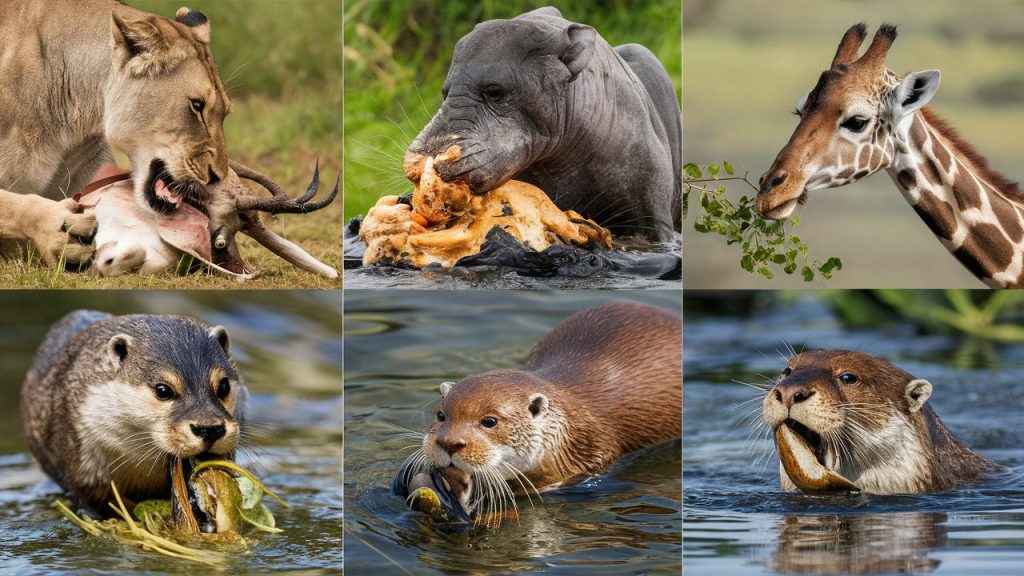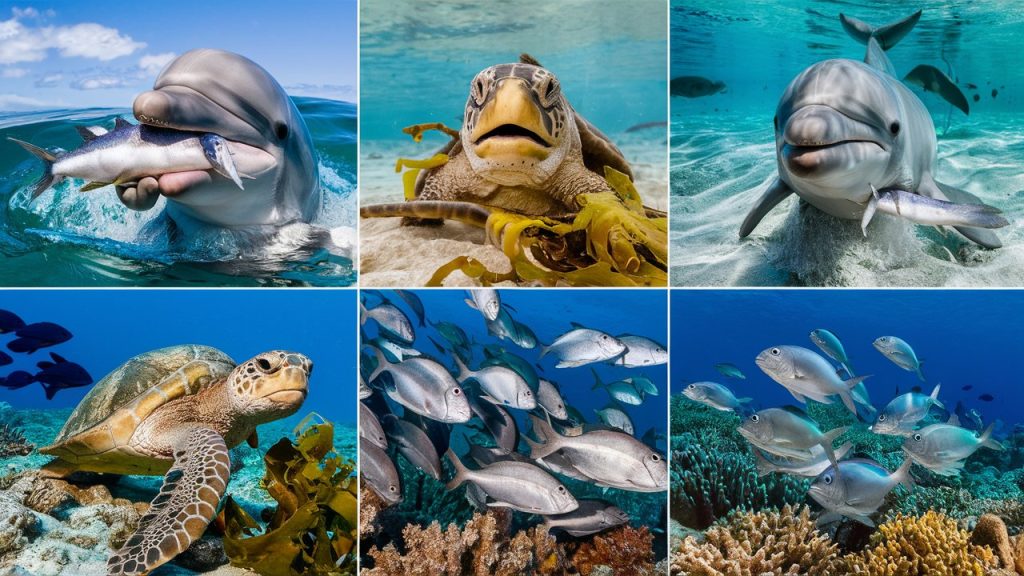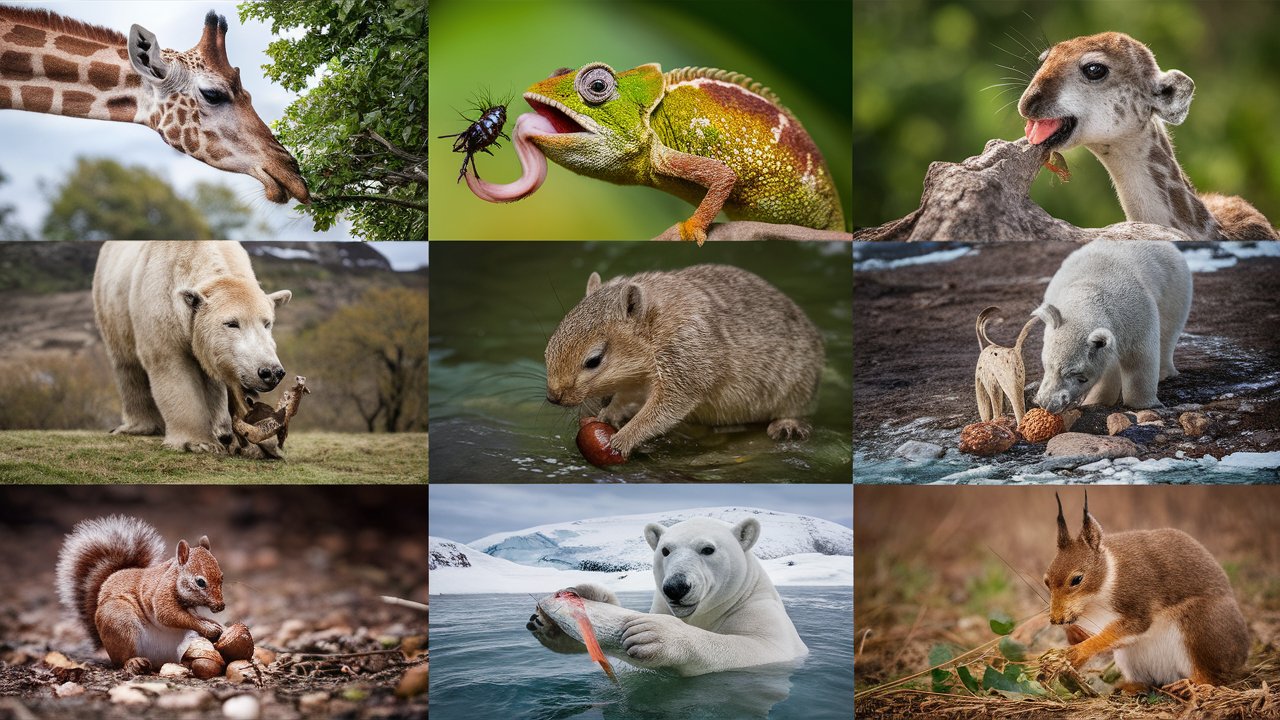Table of Contents
The animal kingdom is full of wonders, and one of the most fascinating things to observe is how animals eat their food. From the tiniest insect to the largest predator, every animal has its unique way of feeding. Understanding these feeding habits gives us a deeper appreciation of the diversity and complexity of nature. In this article, we’ll explore how animals eat their food, revealing some of the most astonishing techniques they use.
How Do Carnivores Eat Their Food?

Carnivores, or meat-eating animals, how animals eat their food, have developed specialized methods for consuming their prey. These animals need to capture and eat other creatures to survive, and their bodies are built for this purpose.
Big Cats and Their Powerful Jaws
When you think of how animals eat their food, big cats like lions and tigers often come to mind. These carnivores use their sharp claws and powerful jaws to take down prey. Once they catch their meal, their strong teeth are designed to tear through flesh. Big cats use their canines to crush the windpipe or sever the spinal cord of their prey, ensuring a quick and effective kill.
Snakes: Swallowing Prey Whole
Snakes have one of the most unique ways of eating. They do not chew their food. Instead, they swallow their prey whole. Their jaws are highly flexible, allowing them to open their mouths wide enough to consume animals that are much larger than their head. Once swallowed, the snake’s body slowly digests the food over time, using strong stomach acids to break down the entire meal.
Herbivores and Their Gentle Eating Habits
Herbivores are plant-eating animals, how animals eat their food, and their feeding habits differ significantly from carnivores. These animals have specialized teeth and digestive systems that help them process rigid plant material like leaves, stems, and seeds.
Cows and Their Multi-Step Digestive Process
Cows, as ruminants, have a fascinating way of eating their food. First, they quickly swallow grass without chewing it much. Later, they regurgitate this partially digested food, known as cud, and chew it again to break it down further. This process helps them extract as many nutrients as possible from their plant-based diet.
Elephants: Using Their Trunks to Grab Food
Elephants have a unique tool for eating: their trunk. The trunk acts as both a hand and a nose, allowing elephants to pick up large amounts of food like grass, leaves, and even branches. They then place the food directly into their mouth. Their large molars grind the rigid plant material into smaller pieces, making it easier to digest.
Also read: Organisms That Make Their Own Food: Nature’s Amazing Self-Chefs
How Do Omnivores Eat Their Food?
Omnivores are animals that eat both plants and meat, how animals eat their food, and they have flexible diets. Because of their versatility, they may thrive in a variety of settings.
Bears: The Ultimate Omnivores
Bears are excellent examples of omnivores. They eat everything from berries and roots to fish and small animals. When fishing, a bear will stand near a river and use its sharp claws to catch fish directly out of the water. They also forage for plants and fruits, making them highly versatile in their feeding habits.
Humans: A Balanced Diet
Humans are also omnivores. Our diets include a variety of foods, from vegetables and fruits to meat and dairy. Humans use tools, such as forks and knives, to cut food into smaller pieces, and we cook our meals, which makes them easier to digest and enjoy. Unlike animals, our methods of eating have evolved with technology and culture.
How Animals Adapt to Their Environments for Food
One of the most astonishing aspects of how animals eat their food is the way they adapt to their environments. Animals living in different habitats must find ways to gather and consume the food available to them.
Birds and Their Beak Shapes
Birds have adapted their beaks to suit their diets. For example, eagles have sharp, curved beaks designed for tearing meat, while hummingbirds have long, slender beaks that allow them to drink nectar from flowers. These beak shapes are a clear example of how animals evolve to meet their feeding needs.
Deep-Sea Creatures: Surviving in Darkness
In the depths of the ocean, where sunlight doesn’t reach, animals have developed incredible ways to find and eat food. Many deep-sea creatures rely on bioluminescence, producing their light to attract prey. Others, like anglerfish, use a lure to bring food close enough to capture.
How Insects Eat Their Food: Tiny but Mighty
Insects, though small, have some of the most exciting feeding habits in the animal kingdom, how animals eat their food. Their methods are as varied as the species themselves.
Ants: Working Together to Find Food
Ants are known for their teamwork when it comes to gathering food. They work together in large groups to carry pieces of food back to their colony. Ants use their strong jaws to bite off bits of food, and some species can lift objects many times their body weight.
Butterflies: Sipping Nectar
Butterflies feed on the nectar of flowers using a long, straw-like structure called a proboscis. This allows them to reach deep into flowers and extract the sugary liquid that provides them with energy. Unlike many animals that chew their food, butterflies sip it.
How Marine Animals Eat Their Food

The underwater world offers a whole new range of feeding behaviors how animals eat their food, with marine animals developing specialized methods to catch their meals.
Sharks: Fierce Predators of the Sea
Sharks are well known for their hunting skills. They use their keen sense of smell to detect prey from miles away and their sharp teeth to tear through their meal. Unlike many animals, sharks don’t chew their food; they bite off chunks and swallow them whole.
Baleen Whales: Filter Feeders
Baleen whales, such as blue whales, have a unique way of eating. Instead of hunting large prey, they are filter feeders. They swim with their mouths open, capturing large amounts of water and tiny creatures like krill. They then close their mouths and push the water out through their baleen plates, leaving the food behind.
From the ferocious jaws of lions to the gentle trunk of an elephant, how animals eat their food is a fascinating subject. Every species has developed a feeding method that suits its environment, diet, and physical abilities. By observing how animals eat their food, we gain a greater understanding of the diversity of life on Earth and the unique ways How Animals Eat Their Food

